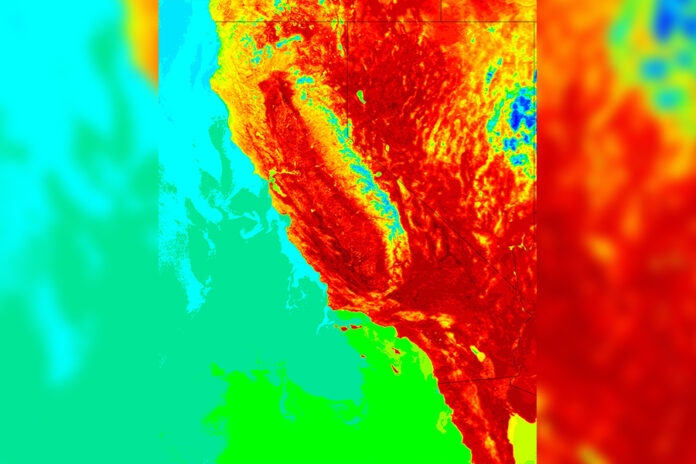New research shows that the notorious heat waves in the California Central Valley are connected to weather events tens of thousands of miles away
Thunderstorms appear overhead in the East Indian Ocean, less than two weeks later a major heat waves strikes California. That is the seemingly strange pattern that atmospheric scientists have uncovered.
In a new study, UC Davis professor Richard Grotjahn and APEC Climate Center researcher Yun-Young-Lee, found a connection between weather in the equatorial region of the globe and the California Central Valley.
“The main finding of this study is that California Central Valley[s] extreme hot weather is possible preceded by tropical region conductive activity,” Yun You Lee said.
The research could potentially help predict when heat waves will hit the Central Valley and give Californian’s more time to prepare for extreme heat.
In the past, heat waves have had a huge impact in California. In 2006, California dairy farmers lost around one billion dollars when prolonged periods of extreme heat swept over the state killing a large number of cows. The weather events also have an effect on millions of people, including the residents of Davis. These impacts, in part, have inspired an investigation into the causes of California Central Valley heat waves.
This latest paper is just a chapter in a much larger story of meteorological causes and effects that Richard Grotjahn and Yun-Young Lee have illuminated in their research.
Atmospheric Scientists understand that heat waves are caused when hot air migrates from a place that is regularly very hot, or when sinking air is compressed, and traps a shallow layer of air near the earth’s surface which the sun quickly warms up. In 2016, Grotjahn and Lee found that California Central Valley heat waves form when a heat wave that originates North of California expands southward, or when a heatwave forms in place over the valley.
“If there is already a heat wave going on in Western Canada it can expand southward to affect our area,” Grotjahn said. “Another way is when the heat wave forms rapidly in place.
Based upon those findings, the research team then asked: what larger global patterns were responsible for the observations? To find the answer, the researchers looked towards the tropics. The area from the Indian Ocean to the Western Pacific is known as the world’s “climate engine.”
“The tropical region is the energy source of the globe,” Yun-Young Lee said. “Huge deep convection there often generates global scale atmospheric circulation, and its impact often reaches to the midlatitudes.”
In the tropics, one of the most important drivers of convection, clusters of rainfall and clouds, is called the Madden Julian Oscillation or MJO. The MJO is a repeating pattern of rainfall that moves along the equator in the tropics in 40 to 50 days. Meteorologists have split the pattern into phases, based on its location. Grotjahn and Young Lee compared the phases of the MJO to the onset of severe heat waves in the California Central Valley over the past two decades. They found a striking correlation.
“It turned out that tropical Indian Ocean and eastern pacific convective motion is evident before the onset of 24 extreme California Central Valley heat wave events,” Yun-Young Lee said.
The correlation indicates that particular phases of the Madden Julian Oscillation are connected to California heat waves.
One of the most important impacts of the study is that it can help build better climate models. When an atmospheric scientist builds a climate model, they compare the model with observational data to determine whether it does a good job of simulating the real world.
“If you are a model designer, you are looking for ways to improve your model, ways to test your model and ways to have more confidence in the projections your model makes,” Grotjahn said. “Where this study could be helpful to such a person, is that we would be giving them another thing to be checking”
A model builder might look for this correlation between weather in the tropics and California to see if the model was actually simulating the incredible interdependent nature of our planet’s climate.
Written by: Peter Smith—science@theaggie.org



